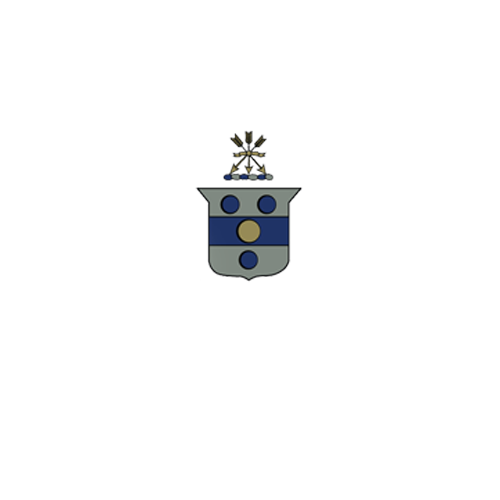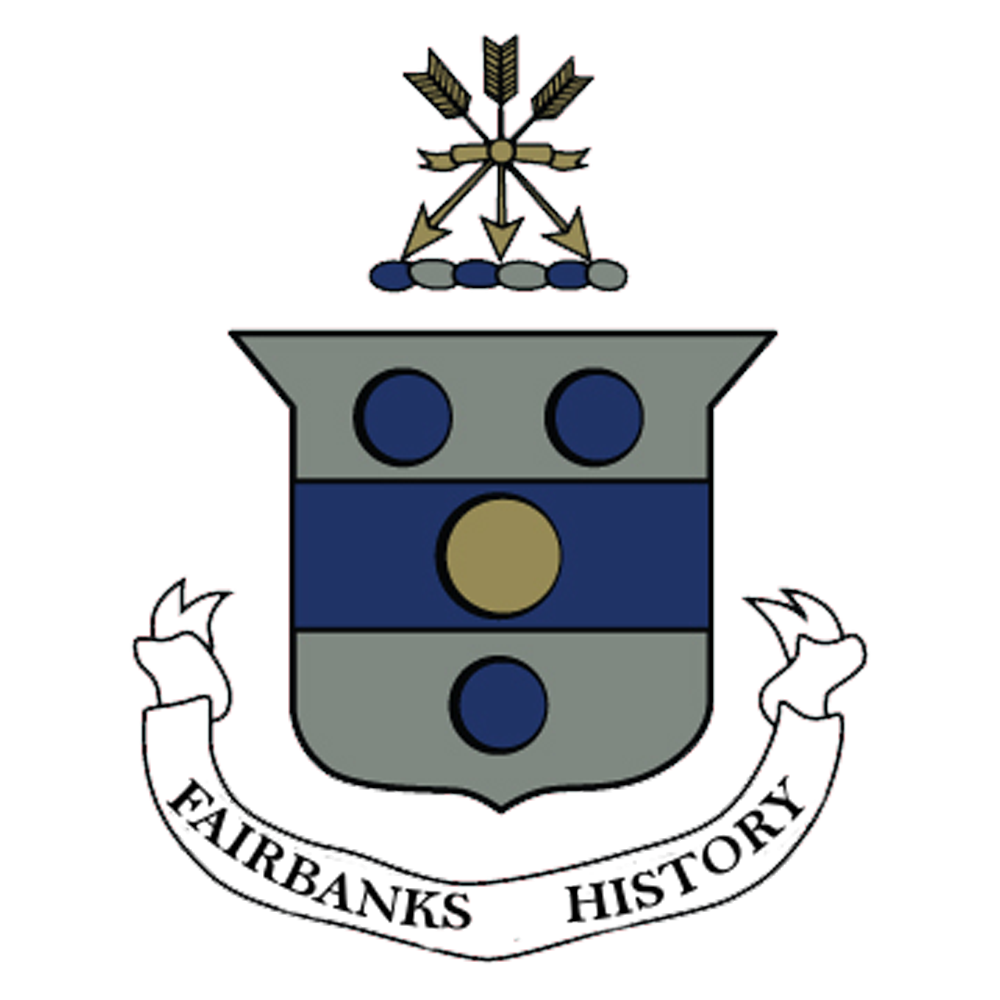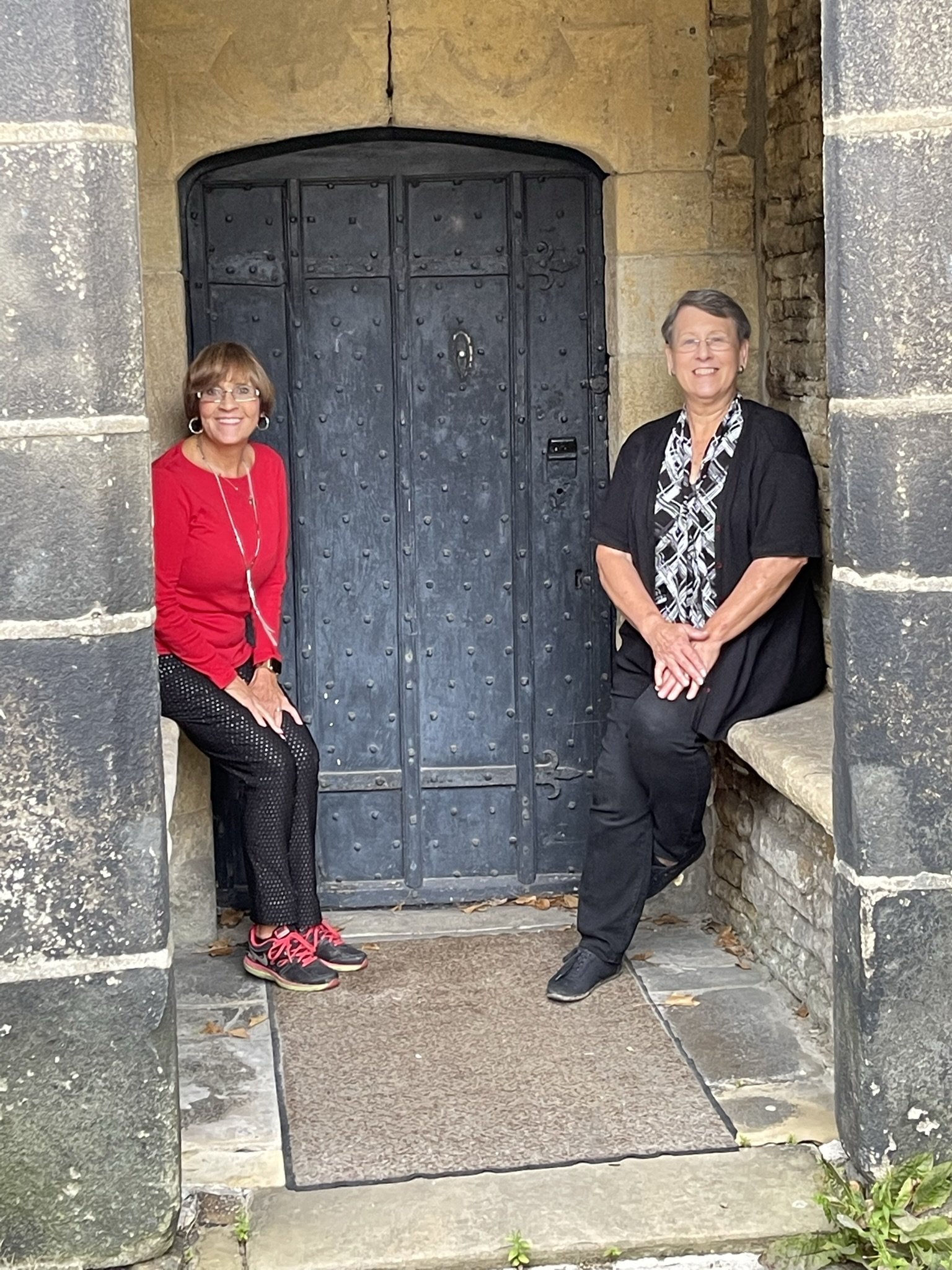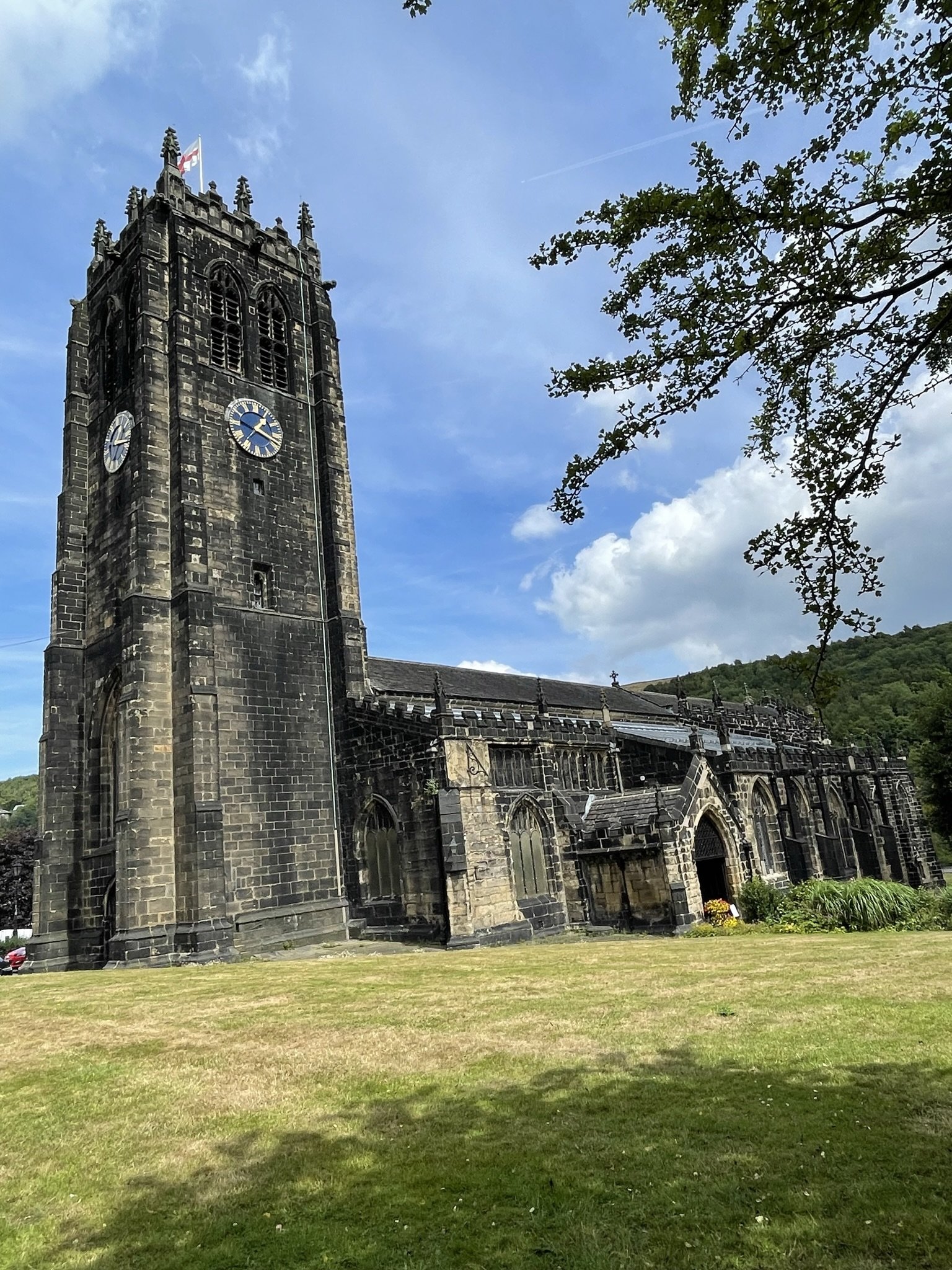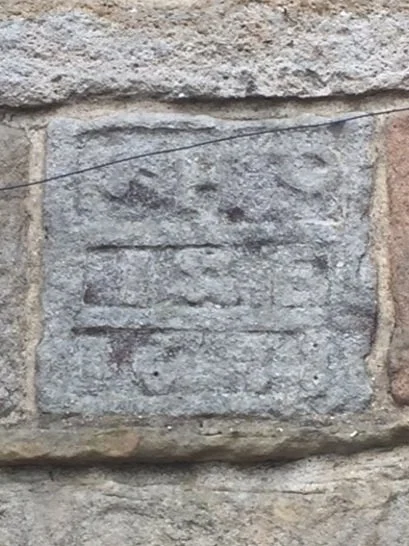The Paths to Fairbanks and Prescott History in England
Welcome to a Tour of England with a Focus on the
Fairbanks and Prescott Histories
The northern part of England is where the Fairbank name originated. Our direct ancestral line can be traced to West Yorkshire. My sister, Shawnee Fairbanks Korff, and I have just returned from a two week intensive research tour of our family in these areas. While in England, we also traveled Lancashire County to look at the land of the Prescotts. We took over 2000 pictures, so we could choose just the right ones to share with you. A special part of out trip was meeting relatives and people who have filled in some gaps in the knowledge of our families in these areas.
For the July blog, I started the blog of Touring England of the 1600s: Focusing on the Fairbank and Prescott Families. I blogged about Halifax where Jonathan and Grace (Smith) Fairbanks were married in 1617 at the St. John’s Church (now known as the Minster). After returning from England, I have so much more to tell about that town that became the largest wool market in Yorkshire.
While I categorize and enter the pictures and information we gathered on the trip, this month, I’ll just give you a teaser of what will come in the next several blogs. The Fairbanks House in Dedham, Massachusetts, celebrated a National Fairbanks Family Reunion on August 13th, just days after our return. We were not able to attend in that short time, but we sent pictures to stream at that reunion. I’ll share some of those with you in this blog.
I have been asked to be the main speaker at the 2023 Fairbanks Family Reunion in Dedham, I’ll be talking more in depth of what I present in the blogs and be able to answer some of your questions. In fact, I’ll use any questions you send through “contact” to help prepare my presentation. I hope you will plan to attend the reunion in 2023. I’m inviting cousins from England to come also. The reunion will be the second weekend in August.
Opening Doors to our English Past for you
Sharmin Fairbanks McKenny and Shawnee Fairbanks Korff, sisters, prepared to open doors for you to learn more history of those who lived in England before they immigrated to the Massachusetts Bay Colony. Through months of communications with previously unknown relatives, helpful knowledgeable guides, kind and generous English people, followers of this blog, and total strangers who were willing to open their doors to us when we knocked, we can now share that knowledge with our friends and relatives through this blog.
The People
Here are some of the people that helped.
Bob Abel, Chairman of Earby and District Local Historical Society
Chris, Anne and family of Middle Hague House
Of course, there were many more. One very important person was Ruth Fairbanks, many of you know her as Ruth Fairbanks Joseph, who wrote “Jonathan Fairbank of Dedham, Massachusetts, and His Family in the West Riding of Yorkshire” published in the New England Journal of Genealogical and Historical Society.
We used her work and research to plan our England trip and we were privileged to spend and afternoon and evening with her. Alas, we had so much information and so much to share, we forgot to get a picture.
Howard Priestley of Phoenix Radio Limited of Halifax invited me to do a radio interview about our historical England tour, the website, and the up coming book. This was all brought about by one of the fairbankshistory.com followers, Debbie Reeve, that you see pictured above.
Wendy Randall, organist for Ings Church, made it possible to find and contact the resident of High Fairbank House which started a chain of discoveries, including another Fairbank from that area, Lindy.
Jenny Wood helped us research before we helped us before we arrived in England through the West Yorkshire Archive Services. She and Steve Crabtree made 1800’s maps available, so we could find the lands of our forefathers.
Nancy, docent at Shibden Hall, spent a lot of time helping us understand historical artifacts of the 1600’s. She is an encyclopedia of knowledge of early England.
People in general were warm and welcoming. Strangers help us know where to get off the bus and point out important historical places that we would have missed.
PLACES
HALIFAX
Our trip started at St. John’s church where Jonathan and Grace Fairbanks were married in 1617.
St. John’s Church at Halifax now known as the Minster. Place of the marriage of Jonathan and Grace Fairbanks
Other places we explored in Halifax were some of the oldest building still standing, Coffee@#1, Piece Hall, Union Cross Inn, Market Square, the Halifax Library and West Yorkshire Archive Services. We saw the guillotine, called the Gibbet, where a “Scroggin” Fairbank and his daughter were executed in 1623 for wool theft. We haven’t found them related to our direct line. After visiting Halifax, I will write an addendum to the Halifax blog and include all important Shibden Hall and the wool museum at Piece Hall and more.
SOWERBY
Believed to be the Old Gate House for Brockwell and/or Old Haugh End. Both of these lands have significance to the Fairbanks family and deserved to be protected by the Gate House.
In Sowerby, we investigated the lands of our forefathers. We found what we believe were the location of lands that are named and described in documents. That includes the area called Platts where Mary Gowkroger Platts came from. We were invited into the Old Haugh End Cottage that was being refurbished. This was owned by Mary’s relative along with much land not far from Fairbank land.
We visited St. Peter’s Church and the park commemorating Old Brigg Chapel, both churches of ease, where the family probably worshiped regularly on Sabbaths since they were more accessible than St. John’s at Halifax. .
We found the Fairbank Textile Company Ltd. which we believe is on or near the ancestral land.
And of course the Sowerby Bridge which connected our family with so many places like Halifax, Shelf, Skircoat, and others which were important in their lives in the 1600s.
WARLEY, LUDDENDEN, HEPTONSTALL and HEBDEN BRIDGE
The Maypole Inn in Warley, West Yorkshire
Warley was a township as well as a town. Jonathan and Grace both are said to have lived in Warley at the time of their marriage. Other towns in the Warley township are Luddenden and Luddenden Foot, where a relative became curate after Jonathan and Grace left for New England.
Heptonstall is known for a cloth hall which was all important in the time of our ancestors. Wool made the area rich and almost everyone was involved in some part of the production or marketing of the type of wool cloth known as kersey (what you would expect in military uniforms or sailor or civilian peacoats).
Heptonstall was also the home of early Fairbank. One in particular mentioned his father and his own birth in the area of Kendal. That influenced our trip to, what some historians call, the place of origination of the Fairbank name.
Hebden Bridge is on the route from northwestern England to Halifax over which packhorse trains carried wool. Some of the wool would have ended at Blackwell Hall in London.
AIGGIN STONE
The Aiggin Stone, the marker for the division of Lancashire County and West Yorkshire County and a way marker for the wool packhorse and cattle herding trail from Lancashire to West Yorkshire. There is also the a visible Roman Road at this location.
You will find nothing but a monolith and a pile of rocks at the Aiggin Stone on Blackstone Edge. However, its importance to Jonathan Fairbanks in his travels and John Prescott in getting from Lancashire to Sowerby can’t be underestimated.
This is where sheep roamed freely on this when we explored. If someone sees a ewe wearing glasses, they are mine. A we climbed, I lost my glasses on the fifth day of our two week tour of England. Luckily, I packed an old pair. We didn’t let rain nor losing glasses interfere with our trip.
THORNTON-in-CRAVEN
The area we traveled next was a part of Halifax Parish in West Yorkshire during the time of of our ancestors.
John Fairbank, the father of Jonathan Fairbanks, the emigrant, lived in the Hague of Thornton-in-Craven from the early 1600s until 1625 when he died during one of the great plagues of England. Even Jonathan Fairbanks lived here with is family for a time.
We don’t know exactly which houses different Fairbank families owned. The father and half-brothers of Jonathan all owned land and houses here. Thanks to our hosts and the Earby & District Local Histoical Society, we visited a grammar school built in 1600 that was likely attended by Jonathan’s older children.
There are two churches that might have been attended by the Fairbank families. One was St. Mary The Virgin, the main church in Thornton-in-Craven Parish, where John Fairbank was buried. The other, St. Mary le Ghyll which could have also been a church of ease for parts of the family.
We will explore all of these in more detail in the future. Shawnee and I were invited to spend some time with the family at the Middle Hague Farmhouse and Barns.
THE ORIGIN OF THE FAIRBANK NAME
Along the Gowan River Valley that flows into the Kent, up on the Pennine slope are the three Fairbank Farms. the High, the Middle, and the Low. They are all on ancient lands settled initially by the ancient Norse. The Fairbank Family was here well before 1517. The direct connection has not been made to our direct line but in preserving history. We visited this area and these farms in hope that in the future a stronger connection can be found.
We explored these farms with the kindness of the people who preserve the buildings and the name Fairbank. They must be related, they were so nice and so interested in the history of the Fairbank name.
Lancashire
From Kendal and the Fairbank Farms in Ings, we traveled by train two hours South to Wigan, Standish, and Shevington of Lancashire County. John Prescott is believed to have come from this area of England. Although his lineage has not been settled, we know of some Prescotts that were in this area when John was here. Several of the people that settle in Lancaster, Massachusetts seem to be from this area also.
We will explore St. Wilfrid Church in Standish where one of the know Prescott line, Ralph Prescott, was buried. Shevington was a farming community on the gently sloping fields to the River Douglas that separates Shevington from Wigan.
Wigan was the larger town. It is where John Prescott is believed to have apprenticed as a blacksmith with an uncle. Prescott probably traveled from Wigan along the packhorse trail of A 58 across Blackstone Edge and by the Aiggin Stone to Sowerby. From Sowerby, John and his family also emigrated from England to the Massachusetts Bay Colony.
London
We decided we couldn’t say we had been in England if we didn’t take a couple of days to explore London. I won’t blog about London as there is much information available about its rich history.
If Jonathan Fairbanks had gone into London, he probably would have done so on wool business. The Blackwell Hall was well-known as a cloth market there.
We did a walking tour passing Buckingham Palace, the Royal mounted guards, and Trafalgar Square. Then we took a boat up the Thames. From the upper deck, we saw the Eye, Shakespeare’s Globe Theater, Westminster Abbey, London Bridge and more.
London Tower took most of our time one day. It was a grand and fascinating palace. We visited Hampton Court, a summer palace of King Henry VIII and frequented by King James I of Jonathan’s era. We saw how the wealthy royals lived and compared that to how the middling families of Fairbanks and Prescott would have lived.
Our most memorable time in the London area was visiting with Ruth Fairbanks Joseph in Chiswick. Her research of the Fairbank family of England helped us to develop our whole trip.
We did find that there was a town very near her called Hammersmith. The name of the ironworks of 1650 and 1651 where Jonas worked was Hammersmith. It was subsidized by London investors. I wonder if some of the investors were from Hammersmith, England?
What’s Next?
That was a quick look at the Fairbanks Tour we took of England.
In the next blogs, I will break the segments down, so I can give you more information and share more pictures. If you have questions or are not already alerted to new blogs when they are posted, send your questions or request to me by tapping “contact” in the side bar.
By being a part of the www.Fairbankhistory.com blog notification group, you will also be notified about the progress of the book and when it will be published. Don’t miss out on any of the England tour.
